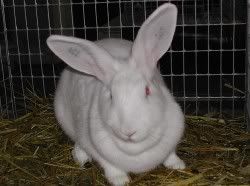- Thread starter
- #51
rty007
Lovin' The Homestead
@ QA - pig matter
durocs are a lot darker in color from those I want, and as you said they do not have a droopy ear.
@ FF - lamb matter
I am looking into it as well, buying on hoof, BUT I will so fly out of home to a life of a single probably renting a lodging, which I rented some time ago where the freezer space is limited to one basket , which is quite bad if you ask me.
@ FF - chicken "recultivation"...
I am not really an egg person, I am a chicken meat person. So i am more interested in flushing the junk out of its tiny body. and roasting it on firee ...muahaha .. yh.. uh.... cough cough ... huh
@ FF - roos
Ok how is it with the roos fighting, do they fight one another before they reach "maturity" it is called somehow.. before they start to clutch? And one the permaculture guys said that he keeps a pure roo pen without hens, and that they do not fight then at least before the age <- mentioned before, which I find hard to believe, BUT since someone not pointing fingers ,said that they call her "the chicken lady" maybe she could tell me if that might be true? If that is true (which I doubt) it would be great just to fatten em up and then.. wham whack the back of the head and into the freezer(after processing that is).
@ FF - about bunnies
If I would find a bunnie at that price, I wouldn't hesitate one moment. but around here, they charge like 3$/kg= 1,3$/lb that averages about 12-20$ per head which is not something I am willing to pay for an animal I am not sure of the feeding system and age. And I am thinking that colony keeping would make it a tad easier.
@ FF - calf
That is a thing to consider.
durocs are a lot darker in color from those I want, and as you said they do not have a droopy ear.
@ FF - lamb matter
I am looking into it as well, buying on hoof, BUT I will so fly out of home to a life of a single probably renting a lodging, which I rented some time ago where the freezer space is limited to one basket , which is quite bad if you ask me.
@ FF - chicken "recultivation"...
I am not really an egg person, I am a chicken meat person. So i am more interested in flushing the junk out of its tiny body. and roasting it on firee ...muahaha .. yh.. uh.... cough cough ... huh
@ FF - roos
Ok how is it with the roos fighting, do they fight one another before they reach "maturity" it is called somehow.. before they start to clutch? And one the permaculture guys said that he keeps a pure roo pen without hens, and that they do not fight then at least before the age <- mentioned before, which I find hard to believe, BUT since someone not pointing fingers ,said that they call her "the chicken lady" maybe she could tell me if that might be true? If that is true (which I doubt) it would be great just to fatten em up and then.. wham whack the back of the head and into the freezer(after processing that is).
@ FF - about bunnies
If I would find a bunnie at that price, I wouldn't hesitate one moment. but around here, they charge like 3$/kg= 1,3$/lb that averages about 12-20$ per head which is not something I am willing to pay for an animal I am not sure of the feeding system and age. And I am thinking that colony keeping would make it a tad easier.
@ FF - calf
That is a thing to consider.

 These were ADULT male birds of various kinds. The exception to that rule was birds of fighting ancestry, the game cocks. They can't get along with anybody it seems!
These were ADULT male birds of various kinds. The exception to that rule was birds of fighting ancestry, the game cocks. They can't get along with anybody it seems!  I have raised and shown bantams, been a youth 4-H club poultry leader and even acted as a poultry judge on occasion.
I have raised and shown bantams, been a youth 4-H club poultry leader and even acted as a poultry judge on occasion. 



